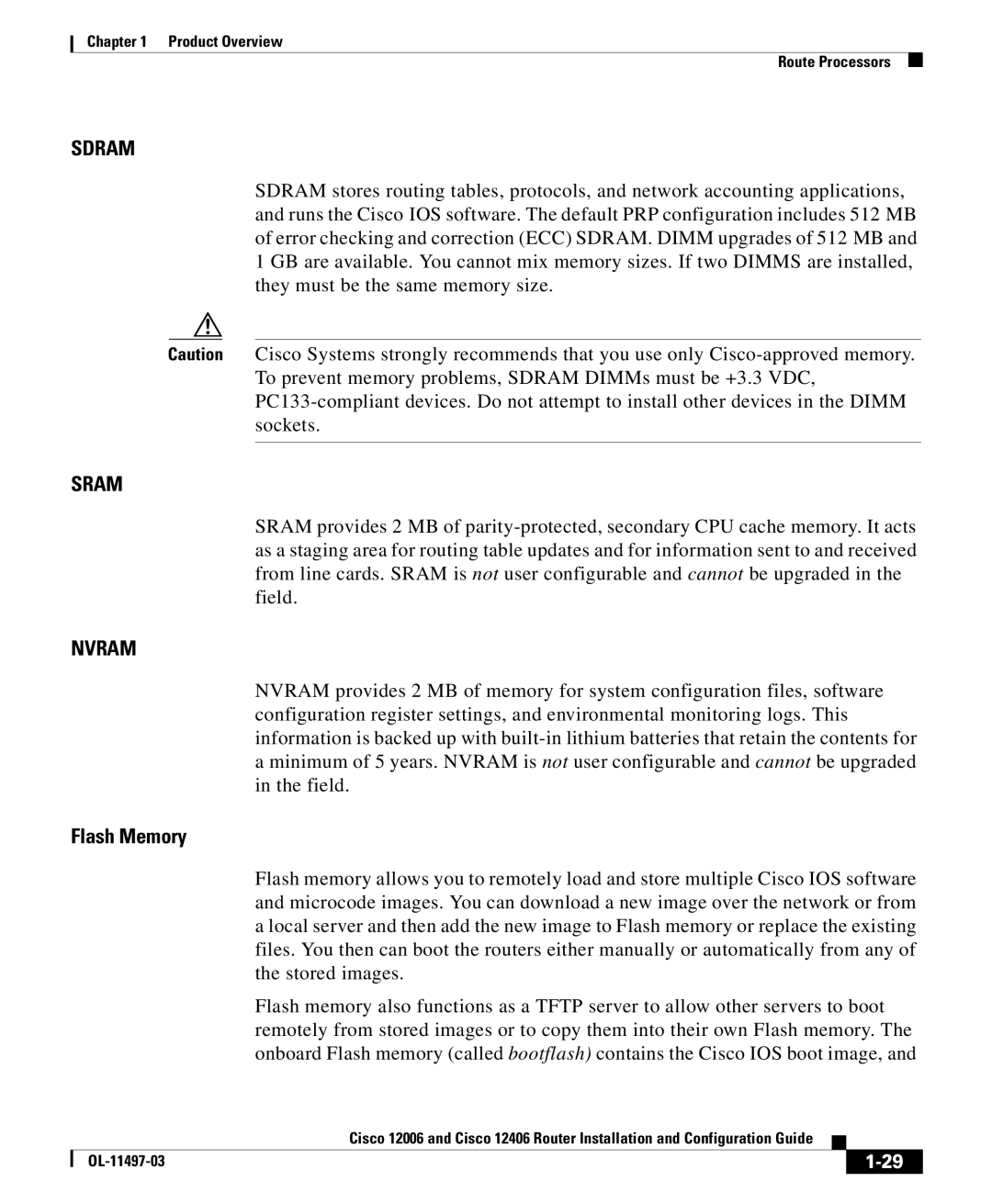
Chapter 1 Product Overview
Route Processors
SDRAM
SDRAM stores routing tables, protocols, and network accounting applications, and runs the Cisco IOS software. The default PRP configuration includes 512 MB of error checking and correction (ECC) SDRAM. DIMM upgrades of 512 MB and 1 GB are available. You cannot mix memory sizes. If two DIMMS are installed, they must be the same memory size.
Caution Cisco Systems strongly recommends that you use only
SRAM
SRAM provides 2 MB of
NVRAM
NVRAM provides 2 MB of memory for system configuration files, software configuration register settings, and environmental monitoring logs. This information is backed up with
Flash Memory
Flash memory allows you to remotely load and store multiple Cisco IOS software and microcode images. You can download a new image over the network or from a local server and then add the new image to Flash memory or replace the existing files. You then can boot the routers either manually or automatically from any of the stored images.
Flash memory also functions as a TFTP server to allow other servers to boot remotely from stored images or to copy them into their own Flash memory. The onboard Flash memory (called bootflash) contains the Cisco IOS boot image, and
|
| Cisco 12006 and Cisco 12406 Router Installation and Configuration Guide |
|
|
|
|
| ||
|
|
| ||
|
|
|
